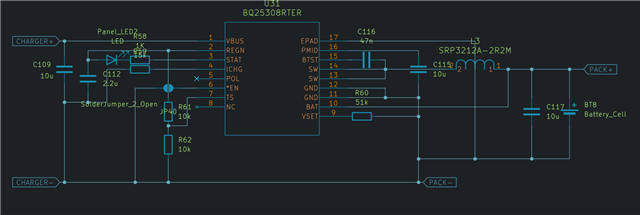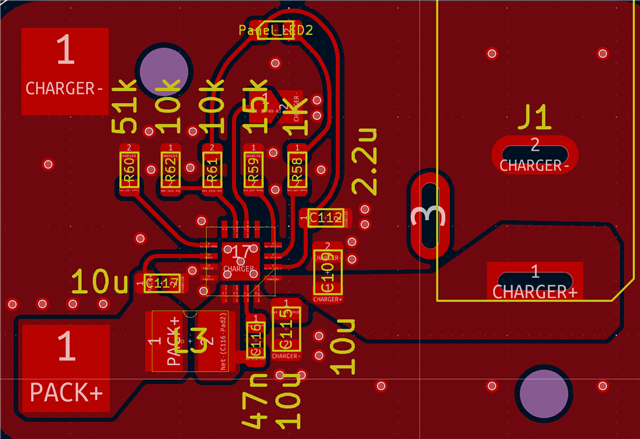Tool/software:
Greetings,
I have made the BQ25308 charger for my 1s Li ion cells at 2.6A charging current. It has worked when testing over a benchtop power supply. But when its connected to a generic AC/DC 12 volt 2A wall adapter like those used for wifi modems the charger has failed multiple times. Its indicator led also stops. When I replace the IC the circuit works again when testing with a benchtop supply. Please let me know what is causing this issue and mitigation steps. I have attached the schematics and layout of my charging circuit and an image of a generic charger. This is urgent as the device in customer's hand.
Note: I have noticed that this failure occurred when I switched on the AC/DC when it was connected to the IC. Could this be due to spike in voltage at startup of the AC/DC converter?
Best regards,
Rasool
Charger layout.pdfibom.html


